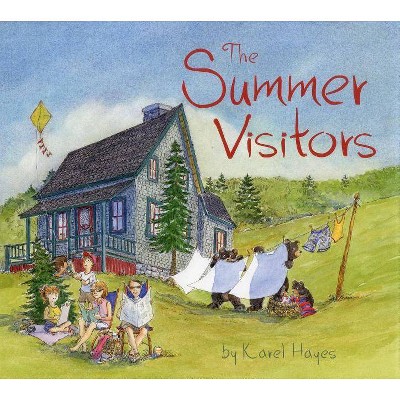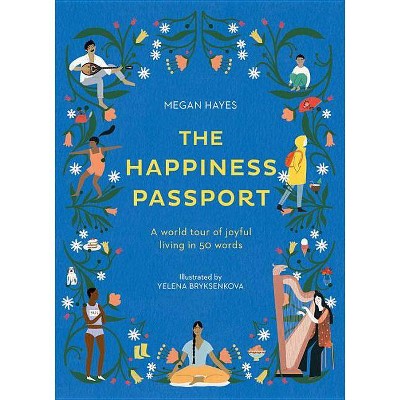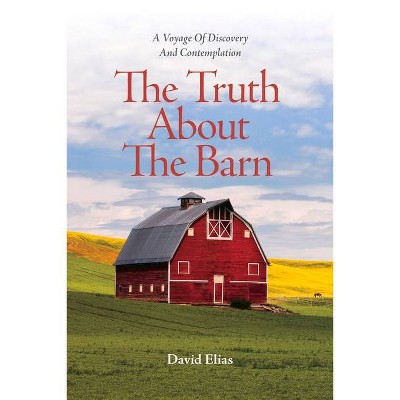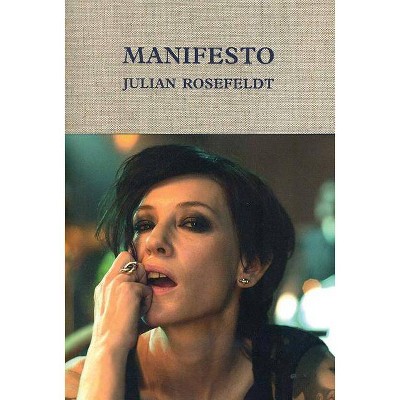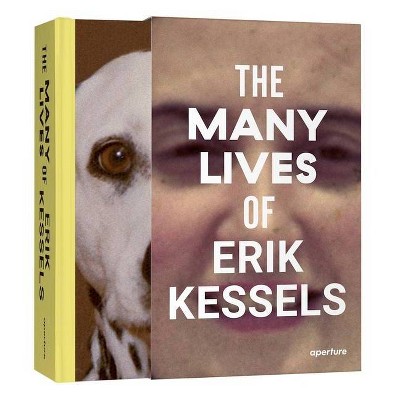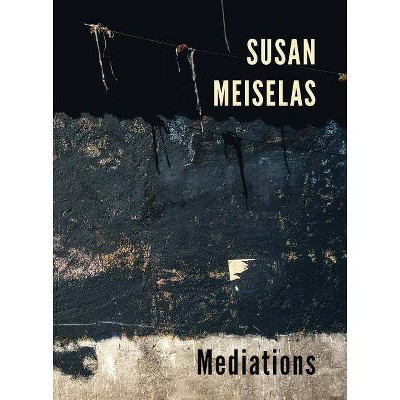Africobra: Messages to the People - by Jeffreen Hayes (Hardcover)

Similar Products
Products of same category from the store
AllProduct info
<p/><br></br><p><b> About the Book </b></p></br></br>"Published ... in conjunction with the related exhibitions ... AFRICOBRA: Messages to the People, presented at the Museum of Contemporary Art, North Miami, November 27, 2018-March 24, 2019; and AFRICOBRA: Nation Time, presented as an official Collateral Event of the 58th Venice Biennale, May 11-November 4, 2019"--Colophon.<p/><br></br><p><b> Book Synopsis </b></p></br></br><p><strong>A major publication about the revolutionary art collective that defined a new Black aesthetic in late 1960s Chicago and whose influence today is stronger than ever</strong></p><p>AfriCOBRA (African Commune of Bad Relevant Artists) was founded on the South Side of Chicago in 1968 by a group of five young Black artists. Today, it is one of the oldest continuously active American art collectives. The pronunciation--Af-FREE-co-bruh--emphasizes the second syllable, signaling the group's central principle grounded in Black liberation: creative expression reflecting the Black experience and Black influences.<br>AfriCOBRA's founding artists--Jeff Donaldson, Jae Jarrell, Wadsworth Jarrell, Barbara Jones-Hogu and Gerald Williams--differed in disciplines and artistic vocabularies but were brought together by the common aspiration to create work that speaks directly to Black people utilizing an identifiably Black aesthetic. This publication celebrates the fifty-year anniversary of AfriCOBRA's founding and marks the collective's powerful relevance today. <i>AfriCOBRA: Messages to the People</i> documents two exhibitions curated by Jeffreen M. Hayes, PhD: one at the Museum of Contemporary Art, North Miami, and another as an official collateral event of the 58th Venice Biennale. It features more than 80 works by the original members as well as those by Sherman Beck, Napoleon Jones-Henderson, Omar Lama, Carolyn Mims Lawrence and Nelson Stevens.<br>More than a historical overview of AfriCOBRA, this book is a response to the artists' continuing contributions and influence, connecting their works to the contemporary moment through essays, archival photographs and ephemera, exhibition views, and contemporary photographs that celebrate the impact of this revolutionary art collective. As their name states, the artists and artworks of AfriCOBRA were as relevant in 1968 as they are today in the continued struggle for Black liberation.</p><p/><br></br><p><b> Review Quotes </b></p></br></br><br>Exploring the art and legacy of the AfriCOBRA, the artist collective founded in Chicago in 1968, this fully illustrated volume documents two exhibitions curated by Jeffreen M. Hayes--"AfriCOBRA: Messages to the People" at the Museum of Contemporary Art, North Miami (2018-19) and "AfriCOBRA: Nationtime," an official collateral event of the 58th Venice Biennale in 2019. More than 80 works are featured by co-founders Jeff Donaldson, Jae Jarrell, Wadsworth Jarrell, Barbara Jones-Hogu and Gerald Williams, as well as subsequent members Sherman Beck, Napoleon Jones-Henderson, Omar Lama, Carolyn Mims Lawrence and Nelson Stevens.--Victoria Valentine "Culture Type"<br><br>These visionaries, and a committed band of associated artists, helped develop the Black Arts Movement's aesthetic with their outpouring of paintings, textiles, fashion design, sculptures, and posters.--Yxta Maya Murray "Bookforum"<br><br>When five black artists from Chicago formed AfriCOBRA (the African Commune of Bad Relevant Artists) in 1968, they sought "to address conditions we were experiencing in our lives, in our positions in the world, and the politics of the nation," says Jae Jarrell, one of the collective's co-founders. "There was much we could do as artists to give a voice to that [...] AfriCOBRA's goal was to "bring uplift to the community", Jarrell says. And they set about this by using what was to become the group's visual calling card--bright "cool-ade" colours-- and by creating positive representations of the Black community. "[We] needed a correction of our people seeing themselves in the art," she says.-- "Art Newspaper"<br><br>"AfriCOBRA: Messages to the People" is a standout... Adding an important historical and artistic page to the American experience. These artists, who'd been formally trained, wanted to present a positive image of the black community, using colors and expressive techniques grounded in that community, during an era where the broader world was often more exposed to negative imagery of riots and street struggle.--Anne Tschida "Biscayne Times"<br><br>AfriCOBRA is more than a collection of art, it speaks to the social and political challenges Black people still face today...--Chadd Scott "Forbes: Media"<br><br>AfriCOBRA: Messages to the People" revisits the large and rich, if neglected by the mainstream, world of 1960s black aesthetics and its legacy. It also appears at a time when the inability of contemporary cultural institutions to respond to the demands of a new activism and scholarship--as gaffe after gaffe evinces--has strengthened a desire to explore politicized cultural movements that rose from the ground up in the past. In this way, while looking back, the exhibition serves the needs of our turbulent moment.--Gean Moreno "ARTnews"<br><br>All of these works in "AfriCobra" tie in African roots with modern black culture, making the exhibit both a historical and artistic journey with contemporary resonance [...] because of course, black activism didn't die; it has morphed and gained new life.--Anne Tschida "Miami Herald"<br><br>During the civil rights era of the 1960s and 70s, a group of black artists in Chicago created vibrant and provocative art as a powerful form of peaceful protest ... [they] used the aesthetic of black art and imaging to fight the the media's perception of their own communities.--Alejandra Martinez "WLRN"<br><br>It's twofold: part of it is about where we are socially and politically, and the other part is the commemoration of the 50th year anniversary of AfriCOBRA's founding. These commemorative moments come to the fore because we realize that though times have changed that we are still not very far from these historical moments. We are in a moment where we are trying to rewrite and expand art history to include those who have been overlooked in the mainstream art world. AfriCOBRA is still very much an active collective, so it's more about the art world catching up to the work of a collective that has been ahead of the curve.'--Daniel Dunson "Sugarcane"<br><br>Pioneers known for [their] neon-colored work that depicted text and images of famous black figures.--Nina Korman "Luxe"<br><br>Standing for the African Commune of Bad Relevant Artists, Africobra's raison d'être is to create art that, in founding member Jeff Donaldson's words, "preach[ed] positivity to the people" throughout the African diaspora. Over the years, the graphic qualities and Kool Aid colour palette of the 15-person collective's work has brought recognition and provided mentorship to artists of colour, influencing the likes of Kehinde Wiley - who painted the presidential portrait of Barack Obama - along the way.--Liam Freeman "Vogue"<br><br>The artists' output defined a black aesthetic that would become familiar and part of the mainstream -- the gestural markings, the bright color schemes, the distinctive textile designs, the expressive and positive depiction of black people and power. The exhibit focuses on 10 artists, both men and women, and their philosophy...--Anne Tschida "Miami Herald"<br><br>The group's distinct combination of text, bright Kool-Aid colors, and an overall jubilant graphic celebration of black life continues to impact contemporary artists.--Caroline Goldstein "Artnet"<br><br>The AfriCobra movement -- African Commune of Bad Relevant Artists -- was founded by a group of African-American artists in Chicago fifty years ago to shine a light on work by artists of color.--Evan Benn "New York Times"<br><br>The Chicago-based art collective's humanistic depictions, vivid colors and pro-Black subject matters would define the visual aesthetic of the Black Arts movement of the late 1960s and early 1970s and continue to have a significant impact on contemporary artists. To celebrate their 50th anniversary, the exhibition at MOCA features the works of original and current members that incorporate such diverse processes as painting, printmaking, textile design, photography and sculpture.--Mariana Fernandez "Observer"<br><br>This exhibition acts as a celebration of the Chicago-based artist collective AFRICOBRA, which helped define the visual aesthetic of the Black Arts Movement of the 1960s and 1970s. Work from the founding artists and other early members will be shown together.--Bailey Calfee "Nylon"<br><br>Using their black identity, its style, attitude and worldview, these artists sought to foster solidarity and self-confidence throughout the African diaspora. Their art reflected the revolution of the mind, body and spirit, creating a vision that went on to define a visual aesthetic of the Black Arts Movement [...] Even though these artists came together to help each other, many of them were largely ignored by the art world. As people were reluctant to a work by a black artist with a political agenda, these were never offered at auctions or exhibited in big art museums, but only at institutions that focused exclusively on African American artists. Their immense influence was only recently acknowledged.--Elena Martinique "Widewalls"<br>
Price History
Cheapest price in the interval: 32.99 on October 22, 2021
Most expensive price in the interval: 32.99 on November 8, 2021
Price Archive shows prices from various stores, lets you see history and find the cheapest. There is no actual sale on the website. For all support, inquiry and suggestion messagescommunication@pricearchive.us

